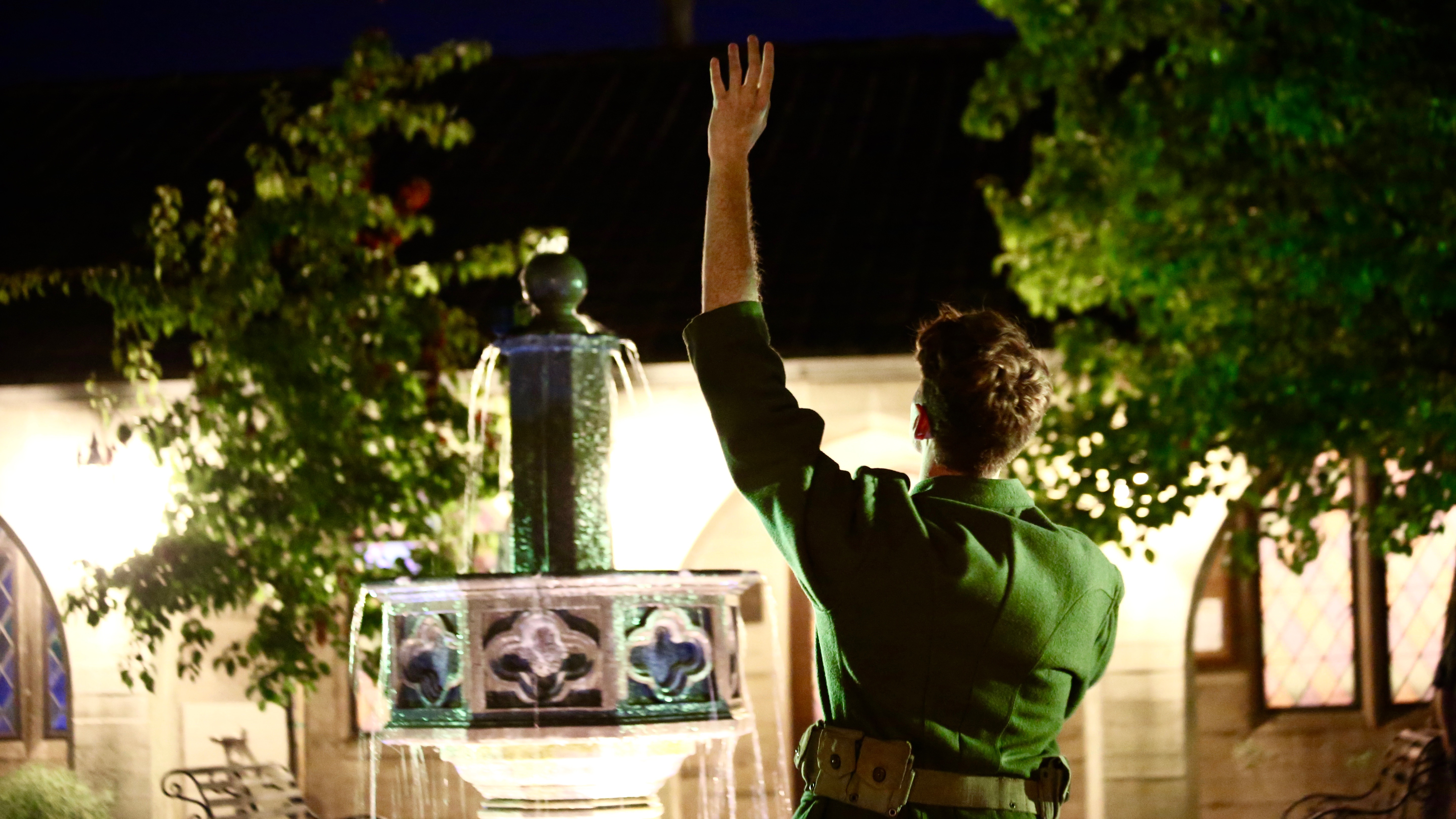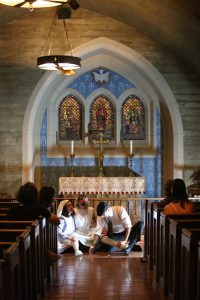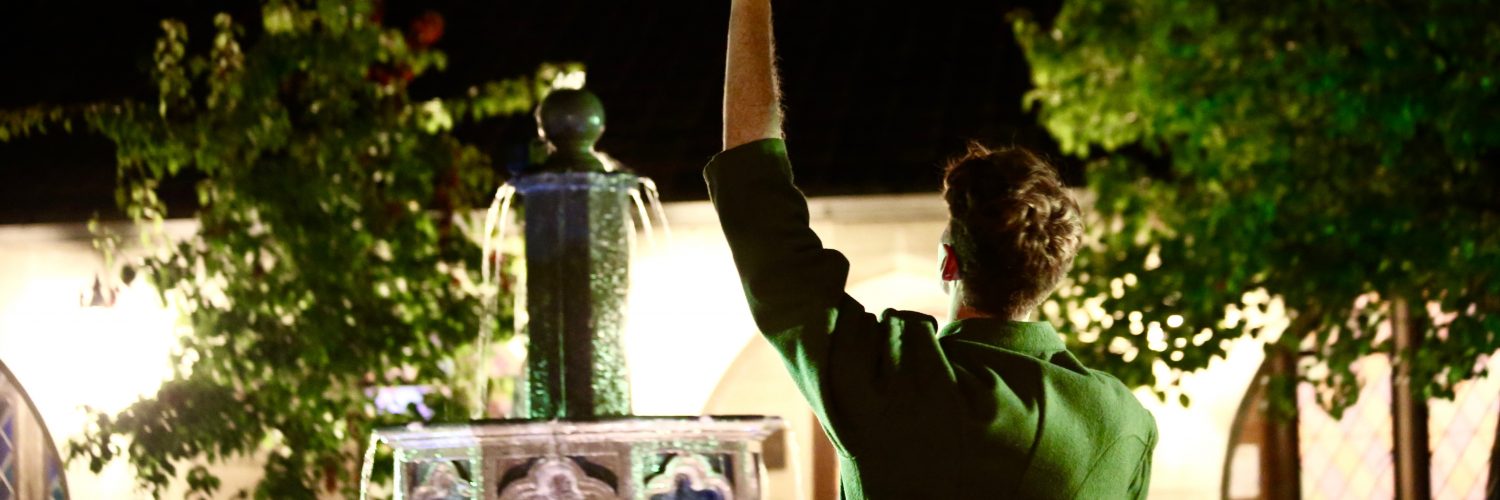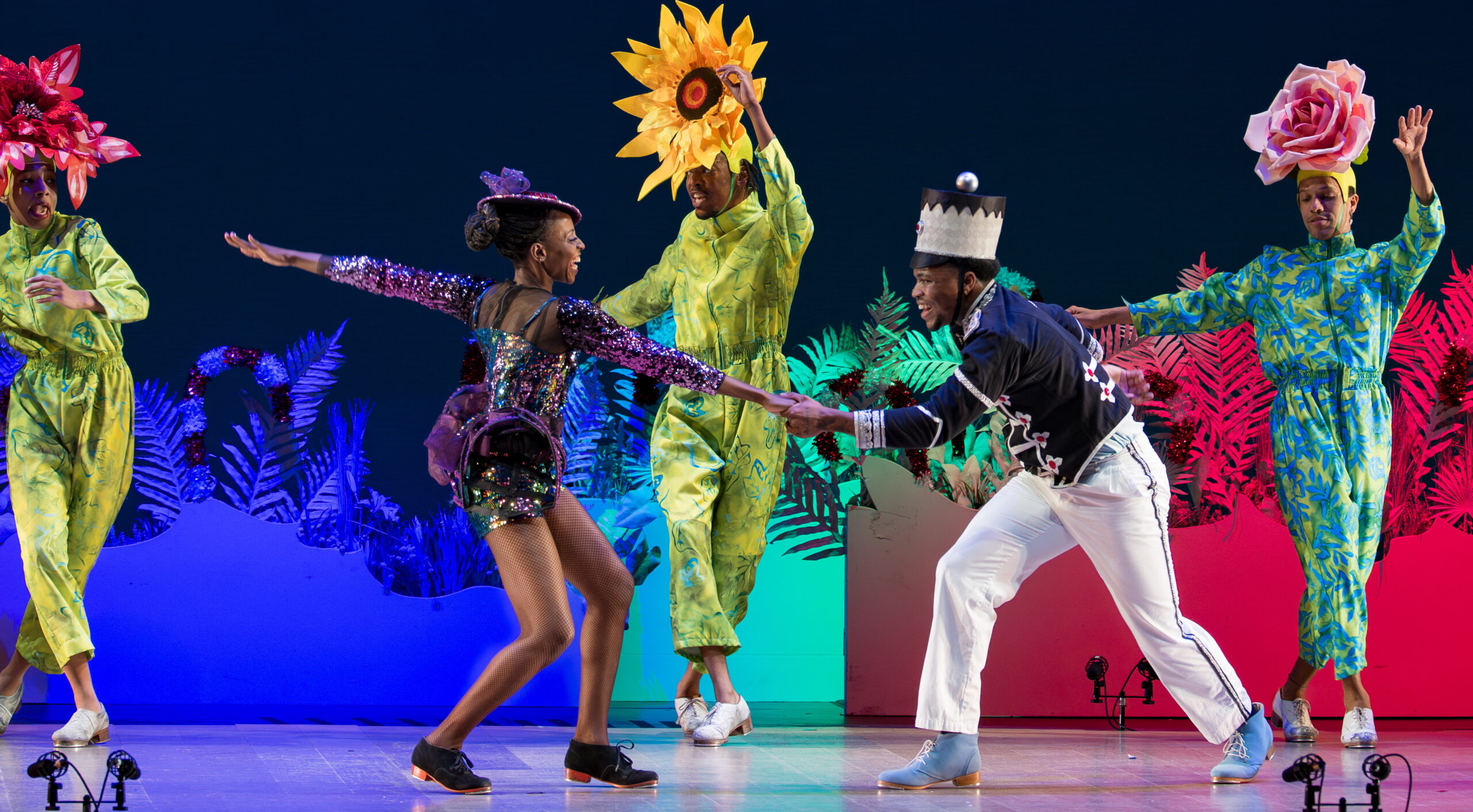
The Johnny Cycle: Part II: The Shell is the second part of a trilogy that The Speakeasy Society is creating, based on Dalton Trumbo’s 1939 anti-war novel Johnny Got His Gun. The Speakeasy Society specializes in creating immersive theatre, which, loosely defined, is a theatre without chairs, where the audience is in on the action and becomes part of each scene. The Shell is this kind of production.
The actors lead the audience, collectively acting as the titular character “Johnny,” around the gorgeous space of St. Mark’s Episcopal Church. The church itself becomes the star of the show, opening up throughout the production and providing an incredible backdrop for every scene. Within this space, we not only watch the actors act, dance, and sing, but we also complete simple tasks as an audience and are occasionally touched or called upon to speak. The framing of the audience as “Johnny” is a very interesting move and I applaud the courage of making the audience the main character. But after a strong opening, in which we were sent off to war, the scenes became more poetic and our positionality within them seemed to matter less. In some instances, other characters seemed to become Johnny. The feeling was dreamlike and ethereal, but that meant I didn’t invest fully in my (audience) role in the production.
I went to this show with two friends – one is an immersive theatre veteran, and the other had never seen an immersive production before. Both companions enjoyed the show a lot, which bodes well for the accessibility of the work to audiences with varied understandings of the art form. The Shell keeps the audience moving and guessing in a way that draws us in, though I missed having either the structure of clear narrative, like a traditional play, or the freedom to craft my own, say, for example, in Sleep No More. Either more agency or more narrative, I feel, would have let me more fully believe that I was Johnny, and that, in turn, would have made me care more about the story. If I had a strong knowledge of the source material, I might feel differently, but not knowing the source text I struggled to connect the scenes I saw.
Before we entered, we were told that we would only see eight of the 30+ scenes in the production on our particular paths, and could return to see the rest. This promise of repeat watchability is intriguing, but because the play became so poetic in its action, I wasn’t sure what additional scenes would have added to the experience. I didn’t feel like I missed out on plot lines that I would want to catch later, because I didn’t feel a strong driving plot, and there was not the sense that I could make different choices that would result in me seeing different things. The acting was top-notch and the movement and music were intriguing, but beyond these I don’t know if seeing new scenes would have increased my understanding.
My most memorable moment of the show happened near the beginning, when I was called in to interview, one-on-one with an actor, to determine my fitness for the army. The questions started banal (though I wasn’t sure whether to answer as myself or Johnny), but got to a point where I had to think deeply about betrayal and revenge in my own life. This simple questioning, though it didn’t change anything later in the show, was a genuine moment of introspection that could only be achieved through immersive theatre.
After the show, I got to go with a select group to watch an “Easter egg” scene which is normally only available if you bring a “token” given to you at a previous Speakeasy show. This was genius – our little group felt special, and the scene was at a brand new location and offered a new perspective on a central character. The Speakeasy Society is onto something idea of rewarding audience loyalty with more content.
In Speakeasy’s previous work, The Hollow, I noted that some of the politics felt dated, and this piece suffers from some of the same issues as the creators bring a classic to a contemporary audience. In The Shell, the audience, male and female, are assigned a straight, white, male character in a hyper-macho world. While the cast is diverse in race and gender, most of them play straight, white, male soldiers throughout, with no commentary on how the diversity of the casting contests this dominant narrative. The context of the piece is the naïve patriotism and wartime spirit of the first World War, which, presented on its own, misses an opportunity to comment on the present War on Terror and rise of Trump. When we were asked if we would die for our country, it didn’t feel like a dialogue – it felt like saying “no” would be out of character and break the world of the show. When I said “no”, there was no reaction, and everything proceeded as if I’d said yes.
For fans of immersive work, I’d absolutely recommend this show, proof that The Speakeasy Society remains at the top of LA’s burgeoning immersive theatre game. The piece is not without problems, but I look forward to seeing how the third installation in this trilogy corrects them.

The Johnny Cycle: Part II – The Shell
The Speakeasy Society
Runs through August 13, 2016
St Mark’s Episcopal Church
1020 N Brand Blvd,
Los Angeles, CA 91202;
Thursday, Friday and Saturday between 8pm and 9:45pm – different times each day.
Running time: 80 minutes.
General Admission: $40







